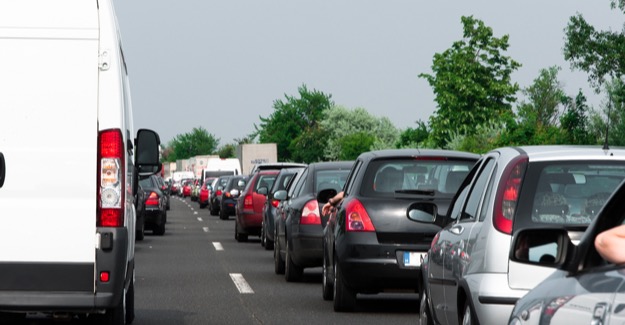Road to the mountains tops the list
The A458 heading towards Snowdonia sees the biggest seasonal increase in traffic on England’s major A roads.
During the summer it carries almost a quarter (23.1%) more vehicles than during the rest of the year.
Figures released by government reveal the top 20 A roads managed by Highways England with the biggest percentage rises in traffic volumes during the summer holiday period.
After the A458, comes the A30 in the West Country (19.2% increase) and the A2070 in Kent heading towards the coast and Camber Sands (16.1%).
The road with the fourth biggest increase is the A494 just north of Chester which runs into North Wales (15%) and fifth is the A31 through the New Forest (13.1%).
The data was published in response to a parliamentary question tabled by Layla Moran MP.
The calculations were based on a comparison of traffic data collected during the 6-week period 25 July 2016 to 3 September 2016 and data collected over another 6-week period, 12 September 2016 to 16 October 2016.
According to the Department for Transport:
“These dates represent the 6 weeks of peak school summer holiday compared to the closest 6 weeks of normal working weeks that were unaffected by school holidays or bank holidays.”
Table: The 20 Highways England controlled A-roads that see the largest increases in traffic during the summer:
|
Road number |
Percentage increase in flow during the summer |
Road length (miles) |
|
A458 |
23.1 |
12.4 |
|
A30 |
19.2 |
116.8 |
|
A2070 |
16.1 |
14.5 |
|
A494 |
15 |
4.7 |
|
A31 |
13.1 |
36.4 |
|
A303 |
12.6 |
98.6 |
|
A35 |
11.6 |
31 |
|
A590 |
10.7 |
20 |
|
A259 |
10.1 |
26.5 |
|
A64 |
8.5 |
60.7 |
|
A20 |
8.3 |
7.4 |
|
A628 |
7.6 |
8.5 |
|
A11 |
6.6 |
37 |
|
A47 |
6 |
93.9 |
|
A23 |
5.6 |
8.1 |
|
A483 |
5.4 |
6.7 |
|
A34 |
5.4 |
45.4 |
|
A26 |
5.4 |
8.4 |
|
A43 |
5 |
31.4 |
|
A66 |
4.9 |
68 |
Steve Gooding, director of the RAC Foundation, said:
“These routes will be known to millions of drivers who use them annually to get to the seaside or the countryside.
“But we sometimes forget that they are also key roads for local motorists who are going about their daily business rather than setting off on holiday. For visitors and residents alike there is nothing worse than being stuck in traffic when they’d rather be anywhere but.
“Some of the percentage increases may not appear that high but on roads that are already heavy with traffic every extra vehicle matters.
“We hope that many of these routes will feature in the government’s future investment programme so that whatever the purpose of people’s journey, the answer to the backseat question ‘Are we there yet?’ will be ‘very nearly’.”
ENDS
Contacts:
Philip Gomm – Head of External Communications – RAC Foundation
020 7747 3445 | 07711 776448 | [email protected] | 020 7389 0601 (ISDN)
Notes to editors:
The RAC Foundation is a transport policy and research organisation that explores the economic, mobility, safety and environmental issues relating to roads and their users. The Foundation publishes independent and authoritative research with which it promotes informed debate and advocates policy in the interest of the responsible motorist.
The RAC Foundation is a registered charity, number 1002705.
All the Foundation’s work is available on its website:
The data above is derived from this parliamentary written question and answer:


